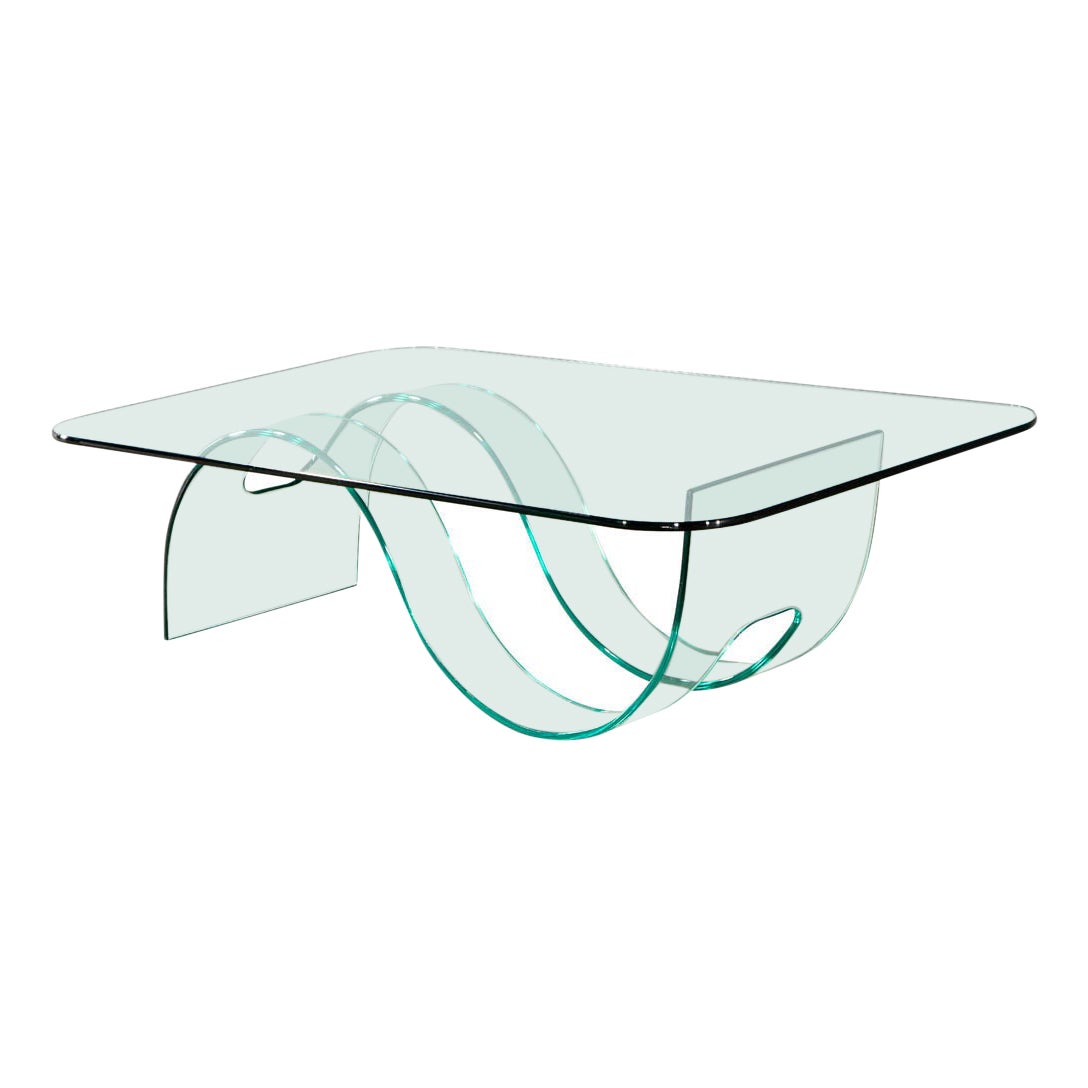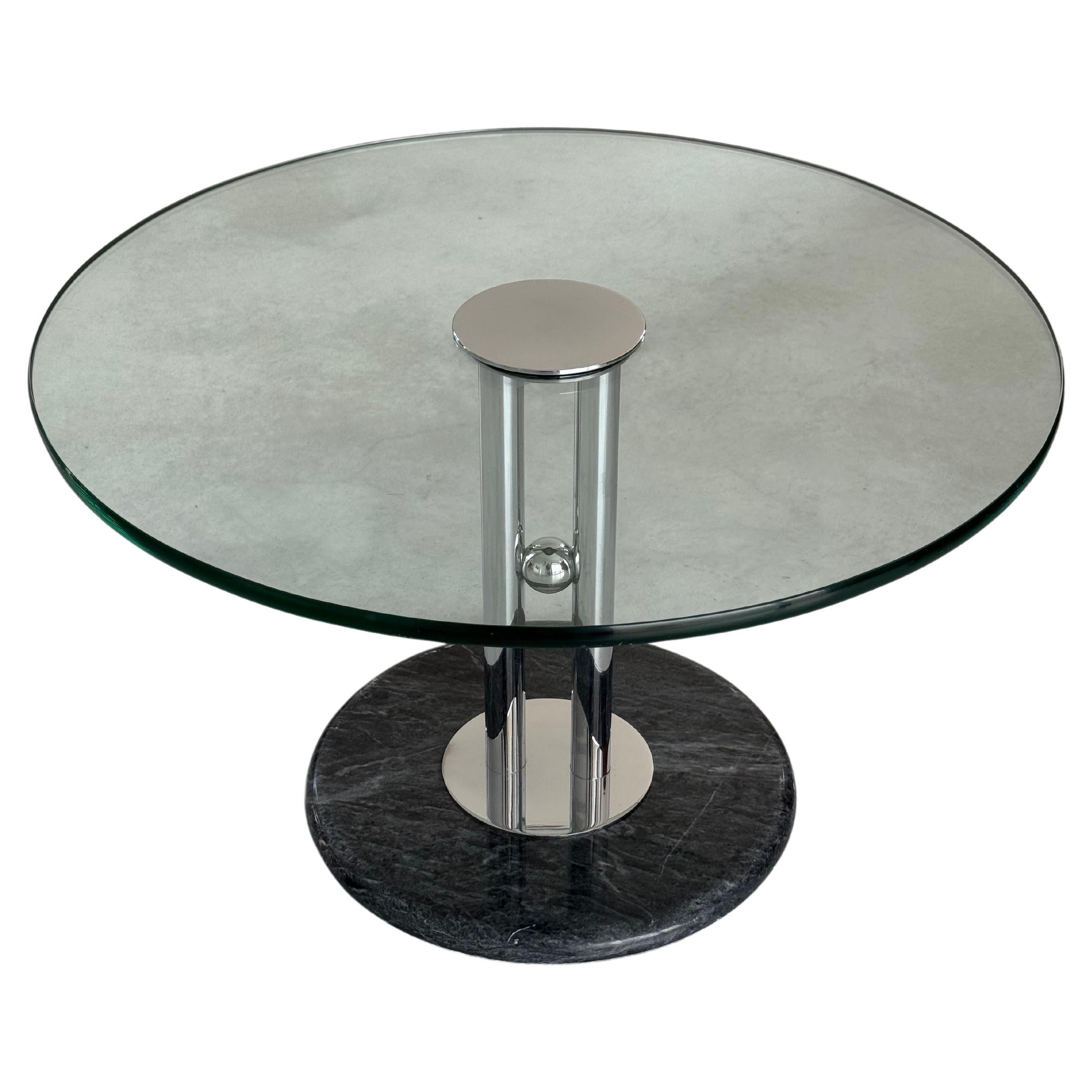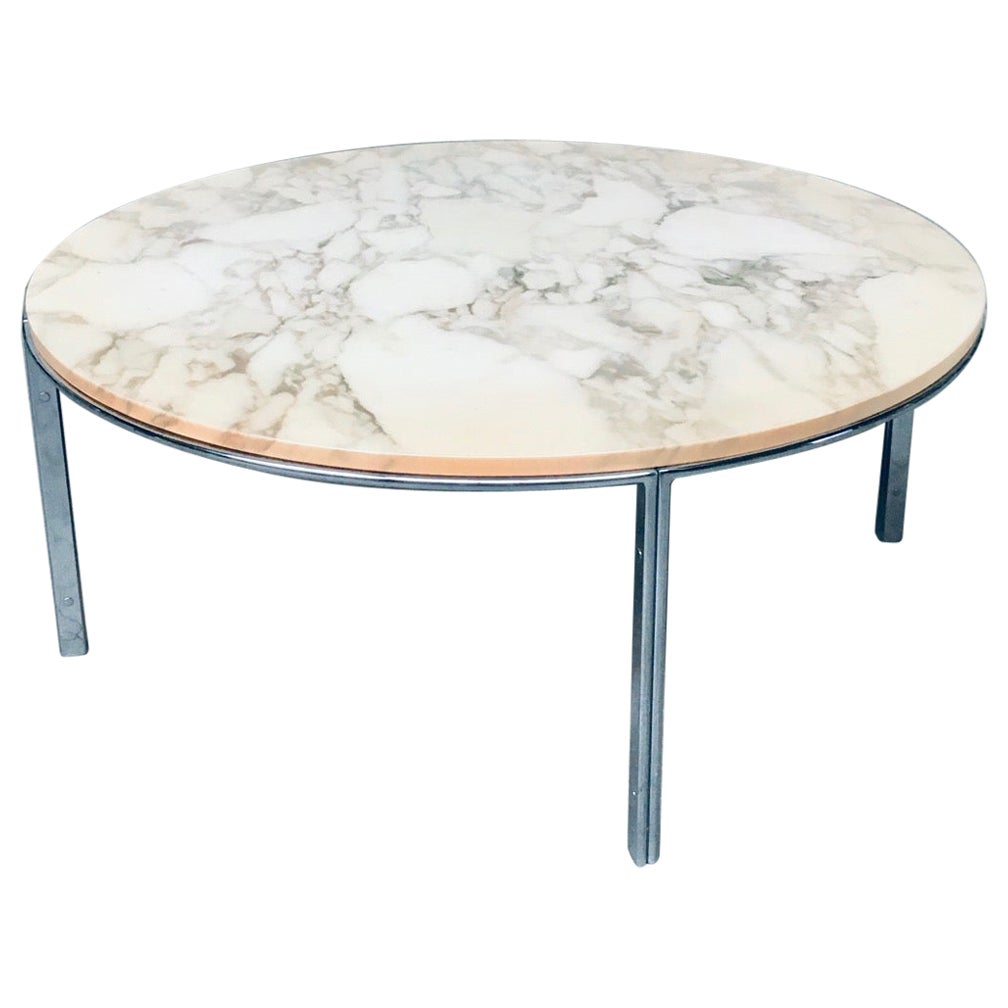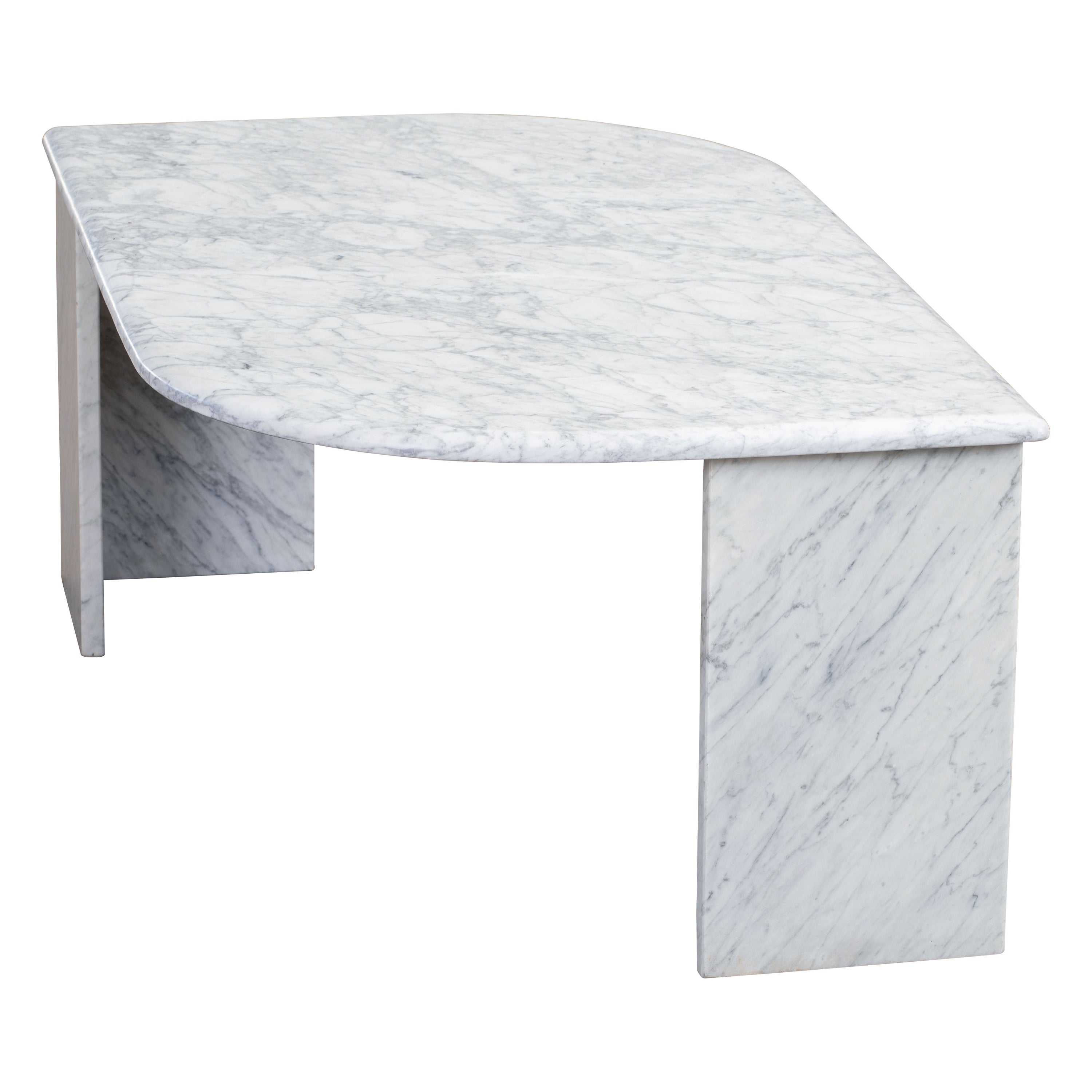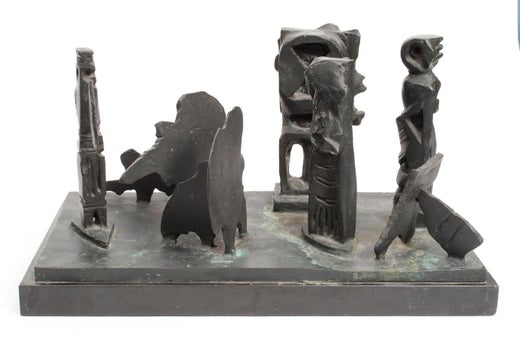Artículos similares a Abbott Pattison Designed & Sculpted Italian Modern Marble & Glass Coffee Table
¿Quieres más imágenes o vídeos?
Solicita imágenes o vídeos adicionales al vendedor
1 de 6
Abbott Pattison Designed & Sculpted Italian Modern Marble & Glass Coffee Table
Acerca del artículo
A 20th century master’s coffee table designed by renowned artist/sculptor Abbott Pattison, (1916-1999). handcut puzzle pieces of Carrara marble imported by the artist in the early 1960s from Florence, Italy, interlock to form the intricate bases in the shape of Jean Dubuffet forms. The majestic large top is handcut with a Dubuffet shape and beautiful freeform curves. Topped off with a major 3/4'' thick biomorphic glass top. A very important and priceless piece of "Furniture as Art" of the 20th century. This one of a kind original piece is from the original owner’s multimillion dollar vintage Palm Springs Art Collector's Estate.
COLLECTIONS:
Johnson Wax Company
Neuberger Collection
Leigh Block Collection
Ravinia Park, Highland Park, Illinois
Meninger Foundation
Hirschorn Collection
Nathan Cummings Collection
U.S. State Department (four sculptures)
And others, including many private collections in the U.S. and Europe, such as Buckingham Palace and the collection of the Late Duke and Duchess of Windsor; Lee A. Freeman; James Alsdorf; former Senator Charles Percy; Senator J. Rockefeller; Albert Robin; Nathaniel Saltonstall, etcetera.
PERMANENT MUSEUM COLLECTIONS:
Whitney Museum
Art Institute of Chicago
Israeli State Museum
Chrysler Museum
Portland Museum, Maine
Portland Museum, Oregon
Corcoran Museum
San Francisco Museum
California Palace of the Legion of Honor
Addison Gallery, American Art
St. Louis Museum
Neuberger Museum
Phoenix Museum
St. Paul Art Center
Evansville Museum, Indiana
Davenport Museum
Davenport Museum of Fine Arts
Palm Springs Desert Museum
Wichita Museum
Flint Institute of Arts, Michigan
Farnsworth Museum
Georgia Museum
Yorkshire Sculpture Park, Yorkshire, England
Norfolk Museum
Biography:
Internationally known as a sculptor, American artist Abbott Pattison worked primarily in cast bronze, welded brass and carved marble. Recognition of his talent first came in his hometown of Chicago through representation by the Fairweather-Hardin Gallery, but his reputation soon spread nationally, with eight one-man exhibits in New York City at The Downtown Gallery and Edith Halpern Gallery. Later he was also represented in Los Angeles by The Feingarten Gallery, and in London by The Alwin Gallery.
Pattison was born May 15, 1916, to William and Bonnie Pattison, the second of seven children. His father was a well-known real estate developer in the city. He first attended art classes at The Art Institute of Chicago at the age of 10, while a student of Francis Parker School. Later he chose to enroll at Yale University because of their art program. While there, he was thoroughly trained in classical traditions of drawing, fresco painting and the Sienese egg tempera style, eventually choosing sculpture as his primary art form.
After he graduated with a liberal arts degree in 1937, he enrolled in the master’s program at Yale. He graduated with a degree in fine arts in 1939. Among the fifty-two students who graduated from the art/architecture department that year, Pattison was awarded first prize, which was a traveling fellowship, and he chose to travel to Northern China and Japan for six months. While in China, he lived in a mountain village 150 miles from Peking with a Franciscan priest who was building a Catholic church in stone quarried from a nearby mountain, Pattison carved Twelve Stations of the Cross for the monastery with the assistance of several local stone masons. Next traveling in Japan, Abbott Pattison was arrested as a spy, but soon released. He warned his interrogators that he would return to Japan, but he would be wearing a uniform the next time.
Upon his return to The United States in 1940, Pattison went directly into Officer’s Training School. From 1942 to 1945, he was given active command as captain of a Pacific Command sub chaser, doing convoy duty between Hawaii and the Midway Islands. He was promoted to first executive officer on a destroyer escort, and was thereafter given full command as captain of a second destroyer escort, running convoys across the Pacific from Florida to the African Coast and into the Mediterranean. He won a Military Merit medal for personal bravery, and his ship received battle stars for downing several German fighter planes. Pattison noted that the only regular paycheck he ever received was from that time when he served as an officer in the United States Navy.
At the end of World War II, Pattison returned to Chicago, and to his art, so that by 1946 he was well known in art circles as the youthful recipient of both the Logan and Eisendrath awards, and as a recipient of one of the four prizes awarded nationally to sculptors by The Metropolitan Museum. He joined the faculty of The Art Institute of Chicago as an instructor of sculpture.
In 1953, Pattison was a visiting sculptor at The University of Georgia, and was asked to return the following year as a sculptor in residence with no teaching duties, having been honored for a second time with the Pauline Palmer Prize for sculpture. At the University, Pattison carved a large marble sculpture, titled Mother and Child and went on to create a 12-foot high abstract horse for the campus in welded plate steel, now called familiarly The Iron Horse. At the time, this sculpture represented the cutting-edge of avant-garde art in the United States. The sculpture was placed in front of the dormitory of the University’s football team, and angry students attacked the horse with spray paint, manure, fire and hammers, with the art department professors merely looking on. The Athens, Georgia police force was called in to quell the disturbance. This event became famous as the first official riot on an American college campus, and became the feature of a Public Broadcasting System movie special. The quarter-inch thick boiler plate steel sculpture withstood the attack and remains intact, but it was immediately removed from the campus and has never returned, sitting in a local farmer’s field since 1954.
Abbott Pattison regarded all sculptors, presently living or throughout time, as his kin. His work was inspired by classical Classical Greek and Etruscan forms, elements of which he interpreted in creating his abstract bronzes, welded braised figures, and marble carvings.
Prior to attending Yale, Pattison did more drawing and painting than sculpture. It was at Yale that he decided to work mostly in sculpture. However, he often exhibited his paintings, watercolors and terra cotta sculptures alongside his bronze sculptures at gallery shows.
Shortly before his death in 1999, Pattison advised his artist son Harry: “If an artist can manage to paint four or five great paintings in a lifetime that’s all that is necessary. It isn’t easy.”
Abbott Pattison spent his summers at his home and studio on the coast of Maine, occasionally teaching at The Skowhegan School of Painting and Sculpture, where he also served on their Board of Governors. He spent his winters in Florence, Italy where the bronze foundry that cast his works is located. The rest of his time he worked in his Chicago studio, occasionally teaching at the Art Institute of Chicago. He continued working to the day of his death at age 82.
Currently more than thirty of Pattison’s works are on public display throughout Chicago, and his sculptures are in the collections of universities, corporations and museums worldwide, including the Whitney Museum in New York City, the Art Institute of Chicago, the Corcoran Museum in Washington, D.C., the San Francisco Museum and the Museum of the Israeli State in Jerusalem. Five of his pieces are owned by the United States State Department and are located in embassies overseas. One of Abbott Pattison’s sculptures is in Buckingham Palace, London.
- Creador:Abbott Pattison (Artista)
- Dimensiones:Altura: 50,17 cm (19,75 in)Anchura: 116,84 cm (46 in)Profundidad: 172,72 cm (68 in)
- Estilo:Moderno (En el estilo de)
- Materiales y técnicas:
- Lugar de origen:
- Época:
- Fecha de fabricación:circa 1964-1965
- Estado:Desgaste acorde con la edad y el uso.
- Ubicación del vendedor:Palm Springs, CA
- Número de referencia:
Abbott Pattison
Abbott Pattison fue un escultor y artista abstracto estadounidense. Tras licenciarse en Yale en 1939 y pasar una temporada en la Marina, Pattison regresó a su Chicago natal. Desde la década de 1950 hasta la de 1970, viajó a Italia para fundir sus bronces únicos en la renombrada Fundición Marinelli de Florencia. Las obras de Pattison forman parte de las colecciones permanentes del Whitney, el Instituto de Arte de Chicago, la Galería de Arte Corcoran y el Museo de Arte Farnsworth, entre otros.
Acerca del vendedor
5,0
Vendedor aprobado
Estos vendedores experimentados se someten a una evaluación exhaustiva por parte de nuestro equipo de expertos internos.
Establecido en 2012
Vendedor de 1stDibs desde 2015
224 ventas en 1stDibs
Tiempo de respuesta usual: 1 hora
- EnvíoRecuperando presupuesto…Se envía desde: Palm Springs, CA
- Política de devoluciónEste artículo no puede devolverse.
Partes de esta página se han traducido automáticamente. 1stDibs no puede garantizar la exactitud de las traducciones. El inglés es el idioma predeterminado de este sitio web.
Más de este vendedorVer todo
- Mesa baja moderna de mármol marrón fosilizado y cromo by Pace CollectionPor Steve Chase, Pace CollectionEsta moderna y sexy mesa de centro estaba en el salón de una finca de Palm Springs diseñada por el difunto Steve Chase. Toda la finca se hizo en topo, marrones, cromo y Lucite. La pa...Categoría
Vintage, Década de 1980, Estadounidense, Moderno, Mesas de centro y cóctel
MaterialesMármol
- Mesa de centro moderna francesa Clemmer Heidsieck de tres pisos de los años 90Por Helène Clemmer HeidsieckToda una declaración moderna y a la vez intemporal. Una mesa de centro arquitectónica diseñada por el artista francés Clemmer Heidsieck. Comprado en Niza, Francia. Combinación de cha...Categoría
Década de 1990, Francés, Moderno, Mesas de centro y cóctel
MaterialesVidrio, Madera
- Vintage Brutaist Italian Travertine and Marble 1970s Modern Column Lamp SignedUna de nuestras lámparas favoritas actualmente en nuestra sala de exposición de North Palm Springs. Una lámpara de columna de travertino italiano muy moderna, hecha de travertino den...Categoría
Vintage, Década de 1970, Italiano, Moderno, Más iluminación
MaterialesMármol
- Lámpara moderna italiana de los años 70 de latón y pantalla de mármol personalizada de Giovanni BanciPor Giovanni BanciEsta es una lámpara moderna italiana muy rara y hermosa, diseñada por Giovani Banci en la década de 1970. Esta lámpara está hecha de mármol blanco de Carrara y hermoso latón. Se ha h...Categoría
Vintage, Década de 1970, Italiano, Moderno, Lámparas de mesa
MaterialesMármol de Carrara
- Mesa de comedor cuadrada o de juego cromada y de cristal de los años 70 para Design Institute AmericaPor Design Institute America, Milo BaughmanEsta serie de muebles de cromo y cristal de los años 70 se ha atribuido muchas veces a Milo Baughman para el Design Institute America. Esta mesa en concreto se utilizó como mesa de j...Categoría
Vintage, Década de 1970, Estadounidense, Moderno, Mesas de comedor
MaterialesCromo
- Vintage 80s Post Modern Escultura original italiana de mármol Carrera de Rose GrantPor Memphis Group, Memphis MilanoAdquirimos 3 esculturas del patrimonio de la difunta artista Rose Grant. Esta pionera ama de casa convertida en artista se formó con los maestros italianos en Florencia y creó una s...Categoría
Vintage, Década de 1980, Italiano, Posmoderno, Esculturas abstractas
MaterialesMármol de Carrara
También te puede gustar
- Mesa de centro moderna de cristal curvado esculpidoMesa de centro moderna de cristal curvado esculpido. Diseño moderno curvo único, todo construido y moldeado en cristal. Estadounidense, hacia la década de 1980, todo original. La enc...Categoría
Vintage, Década de 1980, Estadounidense, Moderno, Mesas de centro y cóctel
MaterialesVidrio
- Mesa de centro posmoderna de mármol y cristal, diseño italiano, hacia la década de 1980Mesa de centro de diseño posmoderno. Base de mármol, estructura cromada compuesta por dos cilindros paralelos y una esfera. Encimera circular de cristal de seguridad (grosor 2,5 cm, ...Categoría
Vintage, Década de 1980, Italiano, Posmoderno, Mesas de centro y cóctel
MaterialesMármol, Metal, Cromo
- Mesa de centro de mármol esculpido a mano con tablero de cristalPor Duffy LondonCivilización es una serie de mesas de mármol talladas a mano de forma única, basadas en Templos y Monumentos antiguos excavados en sus paisajes circundantes. La serie rinde homenaje ...Categoría
2.º década del siglo XXI, Británico, Mesas de centro y cóctel
MaterialesMármol
- Mesa de centro de mármol de diseño italiano moderno de mediados de siglo, años 60 ItaliaMesa de centro vintage de mármol de diseño italiano moderno de mediados de siglo. Fabricado en Italia, años 60 / 70. Encimera redonda de mármol sobre base de metal cromado. Muy bonit...Categoría
Vintage, Década de 1960, Italiano, Moderno de mediados de siglo, Mesas d...
MaterialesMármol, Metal
- Mesa de centro de mármol de diseño italiano, 1970Preciosa mesa de mármol gris, beige y rosa. La pesada encimera elevable en forma de ojo descansa sobre cuatro bloques de mármol con una estructura metálica entre ellos.Categoría
mediados del siglo XX, Italiano, Moderno de mediados de siglo, Mesas de ...
MaterialesMármol
- Mesa de centro de mármol de diseño italiano, 1970Preciosa mesa de mármol gris, blanco y rosa. La pesada tapa en forma de ojo descansa sobre dos bloques en V de mármol.Categoría
mediados del siglo XX, Italiano, Moderno de mediados de siglo, Mesas de ...
MaterialesMármol
